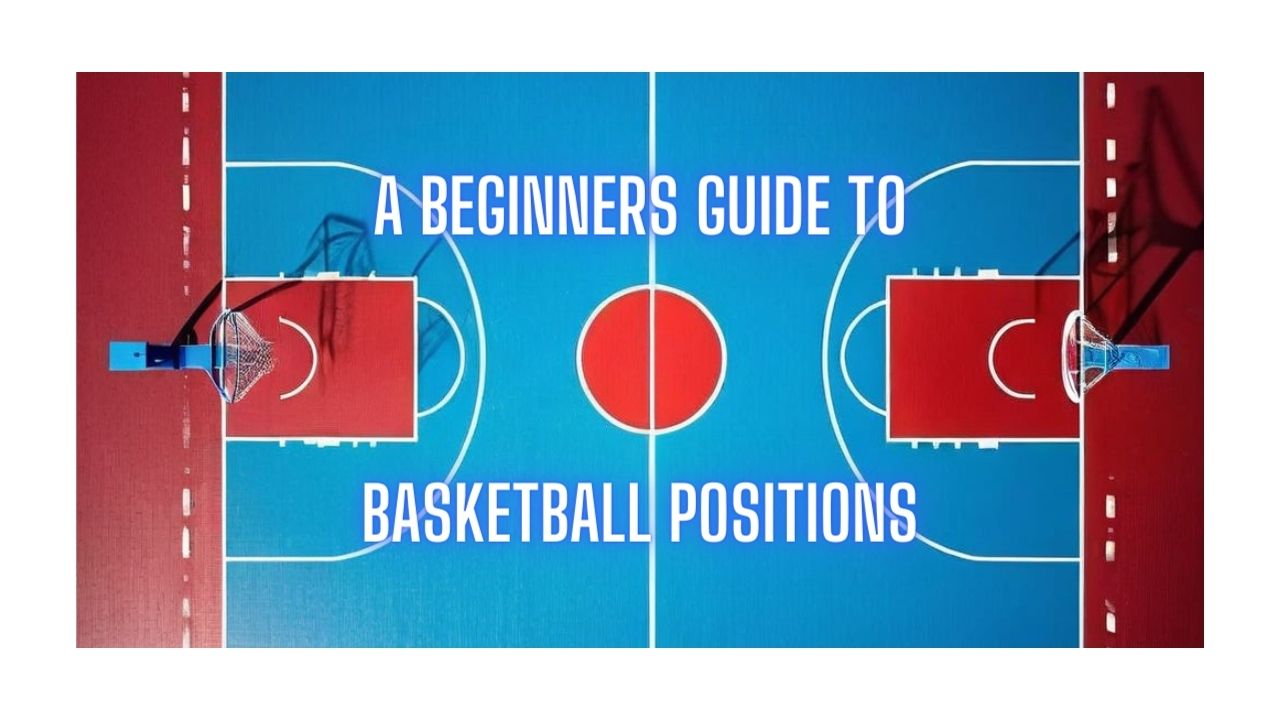Basketball Positions For Beginners Explained

Basketball, a dynamic and strategic game, unfolds on the court with each player assigned a specific role. This quick guide of basketball positions for beginners aims to break down the roles and responsibilities of each position, providing a comprehensive overview of the strategic elements that shape the game.
1. Point Guard (PG): The Floor General
In the fast-paced world of basketball, the point guard holds a special place. They’re the maestros orchestrating the team’s offense, the glue holding everything together, and often, the heart and soul of the squad. Let’s take a closer look at this pivotal position, its role on the court, and what makes a standout point guard.
At its core, the point guard position is all about control and vision. Picture this: a point guard dribbling up the court, scanning the defense like a hawk, assessing their options, and making split-second decisions that can dictate the flow of the game. They’re the ones calling the plays, setting up teammates for scoring opportunities, and keeping the offense running smoothly.
One of the most crucial skills for a point guard is ball-handling. They need to be able to navigate through traffic, evade defenders with slick dribbles, and protect the ball like it’s their most prized possession. A point guard’s handles can be their greatest weapon, allowing them to create space, drive to the basket, or dish out assists with precision.
But it’s not just about dribbling skills. A great point guard also needs court vision—the ability to see the entire floor and anticipate plays before they unfold. This means knowing where teammates are at all times, recognizing defensive rotations, and finding the open man with pinpoint passes. Think of it like playing chess on the hardwood, with the point guard as the master strategist.
Of course, scoring is also part of the job description. While point guards are primarily tasked with facilitating the offense, they’re often expected to contribute points as well. Whether it’s knocking down jump shots, driving to the rim, or finishing in traffic, a versatile point guard can keep defenses on their toes and provide an added scoring threat.
Defensively, point guards play a crucial role as well. They’re typically tasked with pressuring the opposing team’s ball handler, disrupting passing lanes, and setting the tone for the defense. A quick pair of hands and sharp instincts can lead to steals and fast-break opportunities, turning defense into offense in the blink of an eye.
Now, let’s talk about some standout point guards who have left their mark on the game. From the flashy handles of Allen Iverson to the floor-generalship of Magic Johnson, the point guard position has seen its fair share of legends. Today, players like Stephen Curry, Chris Paul, and Damian Lillard continue to redefine what it means to be a modern point guard, blending scoring prowess with elite playmaking abilities.
In the age of analytics, the role of the point guard has evolved even further. With advanced stats like assist-to-turnover ratio and usage rate taking center stage, teams are looking for point guards who can not only put up points but also make smart decisions with the ball and elevate their teammates’ play.
With a unique blend of ball-handling, court vision, scoring ability, and defensive prowess, the point guard sets the tone for the entire squad. Whether they’re breaking ankles with crossovers, threading the needle with no-look passes, or locking down opponents on defense, a standout point guard can change the course of a game—and leave a lasting legacy on the sport.
2. Shooting Guard (SG): The Scorer
The shooting guard position stands out as a beacon of scoring prowess and defensive tenacity. These players are the sharpshooters, the bucket-getters, and the lockdown defenders who bring an electrifying energy to the court. Let’s delve deeper into the world of shooting guards, exploring their role, skills, and impact on the game.
At its essence, the shooting guard position is defined by scoring. These players are often the primary offensive weapons for their teams, capable of putting up points in a variety of ways. Whether it’s draining three-pointers from beyond the arc, slashing to the basket with acrobatic finishes, or pulling up for mid-range jumpers, shooting guards are relentless scorers who can light up the scoreboard in an instant.
But scoring isn’t the only skill in a shooting guard’s arsenal. These players are also known for their defensive prowess, often tasked with guarding the opposing team’s best perimeter scorer. With quick feet, active hands, and a knack for anticipation, shooting guards can disrupt passing lanes, contest shots, and make life difficult for their opponents on the defensive end of the floor.
One of the key attributes of a standout shooting guard is their versatility. These players are often called upon to contribute in multiple facets of the game, whether it’s rebounding, playmaking, or providing leadership on the court. A well-rounded shooting guard can impact the game in numerous ways, making them invaluable assets to their teams.
When it comes to scoring, shooting guards are known for their ability to create their own shot. Whether it’s coming off screens, using hesitation moves to shake defenders, or utilizing footwork to create separation, shooting guards are masters of creating scoring opportunities for themselves when the offense breaks down.
In addition to their scoring prowess, shooting guards are also adept playmakers. While they may not always have the ball in their hands like point guards, shooting guards are capable of making smart passes, finding open teammates, and keeping the offense flowing. This ability to create for others adds another dimension to their game and makes them even more dangerous on the court.
Now, let’s talk about some of the standout shooting guards who have left an indelible mark on the game. From the smooth stroke of Michael Jordan to the relentless attacking style of Kobe Bryant, the shooting guard position has seen its fair share of legends. Today, players like James Harden, Klay Thompson, and Bradley Beal continue to carry on the tradition of excellence at the shooting guard position, showcasing their scoring prowess and defensive prowess night in and night out.
With their scoring prowess, defensive tenacity, and versatility, shooting guards play a pivotal role in shaping the outcome of games and elevating their teams to new heights. Whether they’re draining clutch three-pointers, locking down opponents on defense, or making crucial plays in crunch time, shooting guards are the epitome of basketball excellence.
3. Small Forward (SF): Versatile All-Around Player
The small forward position embodies versatility, athleticism, and all-around excellence. These players are the Swiss Army knives of the court, capable of impacting the game in multiple facets and adapting to various roles as needed. Let’s delve into the world of small forwards, exploring their role, skills, and impact on the game.
At its core, the small forward position is defined by its versatility. These players possess a unique blend of size, athleticism, and skill that allows them to thrive in a variety of roles on both ends of the court. Whether it’s scoring, rebounding, playmaking, or defending, small forwards are often called upon to do a little bit of everything to help their teams succeed.
One of the key attributes of a standout small forward is their scoring ability. These players are capable of scoring in a multitude of ways, whether it’s attacking the basket with explosive drives, knocking down mid-range jumpers, or stepping out to the three-point line and stretching the defense with their outside shooting. Small forwards are often the go-to scoring options for their teams and can take over games when needed.
In addition to their scoring prowess, small forwards are also adept playmakers. With their size and vision, they can see over defenders and make smart passes to set up teammates for scoring opportunities. Whether it’s finding the open man on the perimeter, driving and kicking to shooters, or making the extra pass to keep the offense flowing, small forwards are often the catalysts for their team’s ball movement and offensive success.
Defensively, small forwards are often tasked with guarding some of the toughest assignments on the opposing team. With their size, length, and athleticism, they can disrupt passing lanes, contest shots, and provide rim protection when needed. Small forwards are versatile defenders who can switch onto multiple positions and make life difficult for opposing scorers.
One of the defining characteristics of a standout small forward is their versatility. These players are capable of playing multiple positions on the court and filling various roles depending on the needs of their team. Whether it’s playing as a traditional small forward, sliding up to power forward in small-ball lineups, or even running the offense as a point forward, small forwards are adaptable players who can thrive in any situation.
Now, let’s talk about some of the standout small forwards who have made their mark on the game. From the dynamic scoring of LeBron James to the defensive prowess of Kawhi Leonard, the small forward position has seen its fair share of legends. Today, players like Kevin Durant, Giannis Antetokounmpo, and Jimmy Butler continue to carry on the tradition of excellence at the small forward position, showcasing their versatility and impact on both ends of the court.
With their versatility, scoring ability, playmaking skills, and defensive prowess, small forwards play a vital role in shaping the outcome of games and elevating their teams to new heights. Whether they’re scoring at will, setting up teammates, or locking down opponents on defense, small forwards are indispensable assets who can impact the game in a multitude of ways.
4. Power Forward (PF): The Interior Presence
the power forward position stands out as a cornerstone of versatility, physicality, and athleticism. These players serve as the backbone of their teams, combining scoring prowess with rebounding tenacity and defensive grit to dominate the court. Let’s delve into the realm of power forwards, exploring their role, skills, and impact on the game.
At its essence, the power forward position is defined by its combination of size, strength, and skill. These players typically possess a unique blend of attributes that allow them to excel both offensively and defensively, making them formidable forces on the court. Whether it’s scoring in the paint, battling for rebounds, or protecting the rim, power forwards play a pivotal role in shaping the outcome of games.
One of the key attributes of a standout power forward is their scoring ability. These players are often called upon to provide a significant portion of their team’s offensive production, whether it’s through post moves, mid-range jumpers, or facing up and attacking the basket. Power forwards are skilled finishers around the rim and can use their size and strength to overpower defenders and create scoring opportunities for themselves and their teammates.
In addition to their scoring prowess, power forwards are also essential contributors on the glass. With their size and athleticism, they can pull down rebounds on both ends of the court, giving their team second-chance opportunities on offense and limiting their opponents’ chances to score. Power forwards are often among the league leaders in rebounding, using their physicality and positioning to dominate the boards.
Defensively, power forwards are tasked with protecting the paint and anchoring their team’s defense. With their size and shot-blocking ability, they can deter opponents from driving to the basket and alter shots around the rim. Power forwards are also responsible for boxing out opposing big men and securing rebounds, preventing second-chance points and controlling the flow of the game.
One of the defining characteristics of a standout power forward is their versatility. These players are capable of impacting the game in multiple facets, whether it’s scoring, rebounding, or defending. They can stretch the floor with their outside shooting, facilitate the offense with their passing, and anchor the defense with their rim protection. Power forwards are often the glue that holds their teams together, providing stability and leadership on the court.
Now, let’s talk about some standout power forwards who have left an indelible mark on the game. From the dominant post play of Tim Duncan to the versatility of Dirk Nowitzki, the power forward position has seen its fair share of legends. Today, players like Anthony Davis, Giannis Antetokounmpo, and Draymond Green continue to redefine the position, showcasing their unique skill sets and impact on the game.
5. Center (C): Dominance in the Paint
the center position stands tall as a beacon of dominance, rim protection, and interior presence. These towering figures command the paint, altering shots, grabbing rebounds, and imposing their will on both ends of the court. Let’s delve into the world of centers, exploring their role, skills, and impact on the game.
At its core, the center position is defined by size, strength, and skill. These players typically anchor their team’s defense, serving as the last line of protection around the rim and deterring opponents from driving to the basket. With their towering stature and shot-blocking ability, centers can alter the trajectory of shots and force opponents into difficult attempts.
One of the primary responsibilities of a center is rebounding. With their size and athleticism, they can control the boards on both ends of the court, securing missed shots and initiating fast breaks for their team. Rebounding is essential for maintaining possession, limiting second-chance opportunities for opponents, and setting the tone for the game.
Offensively, centers are often called upon to score in the paint and provide a consistent scoring threat around the basket. Whether it’s finishing alley-oops, converting offensive rebounds into put-backs, or establishing position in the post for high-percentage shots, centers use their size and strength to overpower defenders and generate points in the paint.
In addition to scoring and rebounding, centers are also key facilitators of their team’s defense. They anchor the defense, communicate with teammates, and provide rim protection to deter opponents from attacking the basket. Centers are often among the league leaders in blocks and defensive rebounds, using their length and timing to disrupt opposing offenses.
One of the defining characteristics of a standout center is their versatility. These players are capable of impacting the game in multiple facets, whether it’s scoring, rebounding, or defending. They can dominate in the paint, stretch the floor with their outside shooting, and facilitate ball movement with their passing. Centers are often the focal point of their team’s offense and defense, commanding attention from opponents and dictating the flow of the game.
Now, let’s talk about some standout centers who have left an indelible mark on the game. From the dominant post play of Shaquille O’Neal to the defensive prowess of Bill Russell, the center position has seen its fair share of legends. Today, players like Joel Embiid, Nikola Jokic, and Rudy Gobert continue to redefine the position, showcasing their unique skill sets and impact on the game.
With their size, strength, and skill, centers play a vital role in shaping the outcome of games and leading their teams to victory. Whether they’re dominating in the paint, protecting the rim, or facilitating ball movement, centers are indispensable assets who can impact the game in a multitude of ways.
If you have enjoyed our guide to basketball positions for beginners why not check out our article on The Origin of The National Basketball Association



